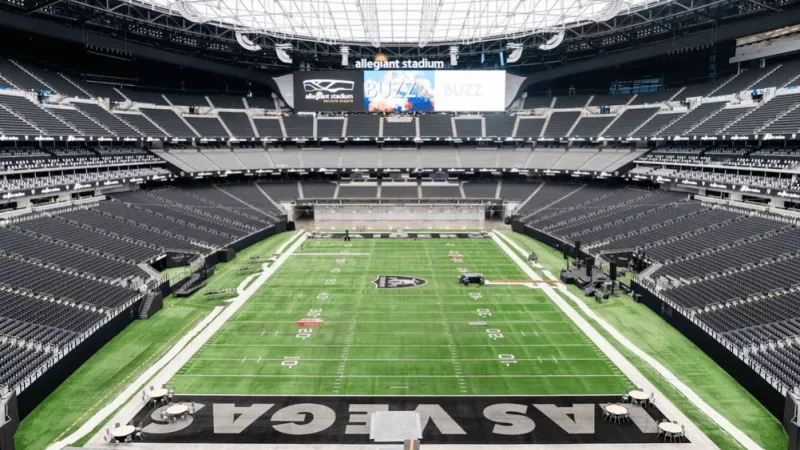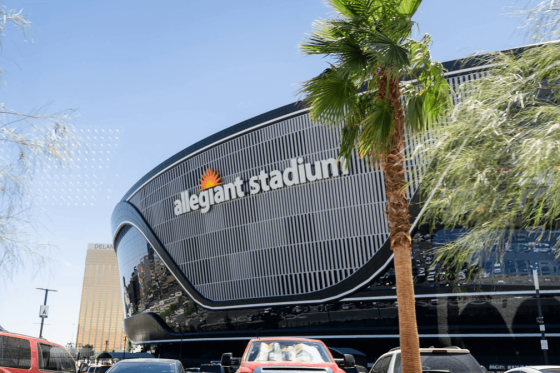A last-minute venue flood, a key athlete sidelined, and sponsors demanding real-time ROI. That's the reality for many in sports event management, where one glitch can turn triumph into turmoil.
Whether you’re running a community soccer match or a major league playoff, sports event managers deal with high stakes that test every decision. The work involves coordinating venues, teams, and crowds while meeting expectations for safety and excitement. As global interest surges, the sector adapts through better tools and mindful practices.
In this post, we'll explore the topic in depth, provide valuable insights, and offer compelling strategies to inspire you.
Current trends in sports event management
Fan demands drive constant evolution in how competitions take shape. Planners now focus on blending digital elements with live action to meet preferences for convenience and immersion.
Personalization through data
Attendees expect content personalized to their interests. Event organizers use data from registrations on event websites or apps to create targeted push notifications for early access to content, specific matches, or player stats, creating a sense of exclusivity. Analytics tools track these patterns to refine future offerings and build stronger connections over time.
Rise of hybrid models
Combining on-site presence with online access widens participation. A cycling race could feature live feeds for virtual spectators alongside trail-side viewing, allowing global followers to join without travel. This format suits varied schedules and often includes features like chat functions that enhance interaction. It also opens revenue through digital passes to extend the event's reach.
Emphasis on health and wellness
Protocols from recent years have incorporated more comprehensive care elements. Events include recovery areas or nutrition guidance, appealing to participants who prioritize well-being. Mental health support, such as quiet zones during high-pressure tournaments, adds another layer. These additions reflect a broader recognition that attendee satisfaction is tied to overall comfort.
Integration of e-sports and tech innovations
Competitive gaming crosses into traditional sports, with hybrid tournaments drawing diverse crowds. Wearable tech tracks performance in real time, while AI analyzes plays for instant insights. Gamification elements, such as point systems for fan activities, keep engagement high. Deloitte's 2025 outlook notes this professionalization, with investments in analytics transforming how sports events are hosted.
4 challenges facing sports event managers
Coordinating competitions means facing issues that arise without warning. A sports event manager often balances immediate fixes with long-term planning.
1. Logistical hurdles
Venues can disappear quickly for sports that depend on specific seasons or conditions, leaving you scrambling for alternatives. Shifting equipment from one spot to another often leads to setbacks, while syncing officials with your timeline creates added strain on the day. Weather throws in its own curveballs, demanding flexible backups that test your resources. Amid all this, you need to stay vigilant to catch minor glitches before they escalate into major disruptions.
2. Financial pressures
Bringing in sponsors demands precise negotiations to secure long-term commitments. When sponsors pull back over concerns about brand visibility or when ticket numbers dip due to inconsistent team performance, the impact lands squarely on your bottom line. Escalating expenses for maintaining fields or sourcing gear further constrict your options, making every choice count. Relying on solid forecasting helps keep your expenditures in line with incoming funds.
3. Regulatory and safety demands
Regulatory and safety standards change depending on where you're operating, covering everything from attendee limits to required medical provisions. For events that span multiple regions, aligning with these differing guidelines means extra coordination and complexity.
Preparing for possible injuries or urgent departures calls for well-trained personnel and straightforward procedures that everyone understands. Incorporating access options, such as ramps or assistive devices, naturally lengthens your preparation window but pays off in broader participation.
4. Audience engagement fluctuations
Sustaining interest grows harder with so many alternatives vying for attention. While younger groups tend to gravitate toward bite-sized videos, dedicated followers often seek comprehensive breakdowns. Therefore, your promotional efforts need to bridge those gaps without weakening the event's central appeal. Collecting ongoing feedback can sharpen your understanding of these dynamics, though evolving tastes mean you're constantly fine-tuning to hold onto your core group.
Beyond fluctuating crowds, staffing shortfalls can leave your team overstretched during critical phases, such as assembly or monitoring. Legal aspects, including contract details and insurance policies, demand thorough scrutiny to avoid vulnerabilities. Addressing these interconnected elements through systematic event planning reduces overall exposure and gives you more control in the long run.
5 effective strategies for successful sports event management
Organizers build resilience through steps that cover preparation and follow-through. For repeatable events, such as league games, consistent processes can reduce errors across seasons.
1. Detailed planning frameworks
Outline every component early, including timelines for promotion and setup. This includes scouting venues that match capacity needs and aligning with participant levels, creating checklists to track progress, and identifying gaps before they escalate. Regular reviews with teams ensure alignment and adaptation to feedback from prior events.
2. Leveraging technology for efficiency
As a sports event planner, you handle plenty of recurring activities, from league registrations to seasonal tournaments, where efficiency comes from tools that automate the basics. Cvent Essentials fits this by letting you set up reusable event website templates for landing pages and forms, so you replicate setups for repeat events without rebuilding everything each time.
It lets you build event registration processes that pull in attendee info automatically, process payments with secure options, and pull reports on participation trends across your series—all from one central dashboard. Quick changes to agendas or invitations keep things current, while analytics highlight patterns like peak sign-up times to inform your next run.
Camille Arnold from Splash covered this in a Cvent podcast on event-led growth, emphasizing scalable systems paired with innovation. She described how Cvent Essentials enables rapid adjustments to event landing pages, agendas, or outreach.
Watch the full discussion to get actionable ideas: [embedded video: https://www.youtube.com/watch?v=PfXMV6YYxwk].
3. Building strong partnerships
Form ties with vendors for reliable support by creating contracts that outline roles, including contingencies for disruptions. Sponsors gain visibility through co-branded materials, while local groups assist with event logistics. These collaborations share expertise and enhance execution without overburdening internal resources.
4. Focusing on attendee feedback
Post-event surveys are essential in capturing attendee views on aspects like event flow or amenities. Analyze responses to guide changes, such as adding more entry points to ease registration lines, in your future events. On the other hand, real-time input during the event, via apps, can help you make immediate tweaks. This cycle strengthens loyalty, as participants see their input valued.
5. Risk management approaches
You prepare for uncertainties by running practice drills that mimic common problems, such as postponed starts or disputes among teams. Secure appropriate coverage to protect against claims, and craft clear updates to share with all involved parties as situations unfold. Equip your crew with specific guidelines so they respond confidently, keeping the event centered on the sport itself.
Sustainability in sports events: A growing priority
Waste reduction initiatives
You achieve effective results by setting up dedicated sorting stations that separate recyclables at the source. Adding composting for food remnants at vendor areas reduces the total amount headed to landfills. Major leagues commit to zero-waste standards, demonstrating how consistent efforts lead to measurable cuts in debris. For instance, the Boston Marathon collected cups and wrappers for direct repurposing into new products.
Energy and resource conservation
Switching to LED lights or solar setups lowers power needs during long matches. Recycling water for field care helps keep usage in check, especially during extended tournaments. You gain from these green upgrades by lower ongoing costs and a reputation for forward-thinking operations.
Community and carbon offsets
The Paris 2024 Olympics cut emissions by favoring public transit and reusing existing spaces. It showed that teaming up with local authorities to back projects like tree plantings funded by ticket proceeds can create direct positive effects. Similarly, involving fans through awareness campaigns during the event strengthens their tie to the cause.
Material sourcing choices
Choosing gear made from recycled materials or partners with minimal environmental footprints can fit right into your planning. Arenas like those for the Montreal Canadiens introduce biodegradable options for utensils and packaging. Practical moves like these demonstrate shifts that work in real settings. Attendees who care about these details respond with greater commitment and build lasting attendance.
Future outlook: What's next for sports event management?
Sports events continue to draw massive audiences, pointing to sustained expansion in the coming years. Projections show the global sports events market size was estimated at USD 452.79 billion in 2024 and is projected to grow at a CAGR of 7.2% from 2025 to 2030. Planners stand to benefit from these shifts, with new technologies and models opening doors to more scalable operations.
AI and predictive tools
Artificial intelligence is already assisting in anticipating crowd sizes or potential disruptions, giving organizers data to allocate staff more effectively. Sports event organizers can apply these capabilities to adjust promotions on the fly, such as scaling ticket offers based on early trends. Over time, this leads to fewer wasted resources, with systems learning from past data to refine forecasts for everything from concessions to security.
Enhanced inclusivity features
Event designs are increasingly incorporating elements like real-time captioning or adjustable seating to serve diverse groups. Adaptive technology, such as apps that guide visually impaired attendees, broadens who can participate fully. Meeting these equity standards not only complies with guidelines but also attracts a wider base and turns inclusivity into a competitive edge for repeat events.
Virtual and augmented integrations
Blended realities allow fans to experience games from afar through virtual simulations or augmented overlays on mobile devices. Hybrid configurations support this by mixing live streams with interactive features and generating additional income from online viewers. As adoption grows, these tools are expected to make regional tournaments accessible worldwide without added physical infrastructure.
Conclusion
You’re managing more than just an event; you’re managing expectations, logistics, tech, safety, and shifting fan behavior. And it’s only getting more complex.
But with the right systems, solid planning, and a clear understanding of what today’s audiences value—personalization, hybrid access, wellness, and sustainability—you’re in a strong position to build events that not only run well but resonate.
Platforms like Cvent Essentials can help simplify the backend so you can focus on delivering memorable event experiences up front. The game is evolving, and so is the way you lead it.
Frequently asked questions
What is sports event management?
Sports event management is the full cycle of planning, executing, and evaluating gatherings centered on athletic competitions, ranging from community races to professional leagues. This involves coordinating venues, teams, spectators, and vendors to deliver safe, enjoyable experiences that meet objectives like revenue generation or community building.
What are the key skills needed for sports event management?
Essential skills required for sports event management include strong organizational talents for handling timelines and resources, communication to liaise with stakeholders, and problem-solving to tackle unexpected issues. Financial acumen helps with budgeting, while knowledge of event marketing draws crowds effectively.
How does technology impact sports event management?
Technology has changed operations at sporting events. Tools like mobile apps, software for real-time data analysis, and speed networking apps for attendee interaction are now available. These reduce the need for printing badges and flyers and automate tasks such as registration and feedback collection.
What are some examples of sustainable practices in sports events?
Initiatives include using solar-powered facilities, promoting public transport to reduce emissions, and sourcing local, organic food for concessions. Events like the Olympics have adopted zero-waste goals, diverting materials through composting and recycling to lessen their overall footprint.









